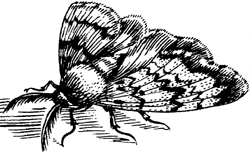
| M o n a r c h W a t c h | |
| Biology |
Anatomy
Sexing
Monarchs
Life
Cycle
Sensory
Systems
Predation
Parasite
Control
Systematics
Seasonal
Populations
Western
Population
Population
Genetics
Theories in
Evolution &
Population
Genetics
| Systematics | ||||||||
Systematics is the science of identifying, naming, and classifying living organisms into groups of related species. This process helps scientists not only communicate clearly about the species they study but also better understand and keep track of the millions of species that make up the natural world and the relationships of species to one another. Background on Systematics Scientists name and put organisms into groups based on their evolutionary history (how closely related they are). These groups start very general and large, for example plants or animals, and become increasingly specific until you reach the name of just one species. Each species has a scientific name that anyone in the world can recognize, even in countries such as Russia or Japan where they use different alphabets. People have classified and named organisms for millennia (some systematists today, for example, study Native American names for plants as they work to classify new species). In the eighteenth century, a Swedish physician and botanist named Carolus Linneaus developed the naming system we use today. Using Latin and Greek words, Linneaus gave thousands of species two-part, or binomial, names based on characters such as their appearance or origin. The first part of a scientific name is called the genus. A genus includes one to many organisms that are closely related. The second part of a scientific name, called the species name, differentiates between members of a genus. Together, the genus and species name provide a unique name for every species. Some scientific names of familiar species are:
Notice that the scientific names of these species are printed in italics. (If you are handwriting a scientific name, you underline it.) You may want to show or read some of these names to your students. Scientific names are almost always descriptive. Using Latin or Greek, scientists name an organism for its appearance, its locality, its behavior, or to honor its discoverer. For example, Homo means human in Latin and sapiens means wise or knowing, also in Latin, so Homo sapiens refers to the wise humans. Octopus means eight feet and vulgaris means common. Biologists construct genealogies that represent their best understanding of the evolutionary relationships between species. To do this, they use specific traits called taxonomic characters. These characters are attributes that differ between groups and distinguish them from one another. Historically, taxonomic characters were most often traits such as form, shape, or structure of an organism's different parts. For example, taxonomic characters for a group of birds might include beak shape and size and wing shape. In Lepidoptera (butterflies and moths), important traits include the shape of the genitalia and patterns of wing venation. Lepidoptera are divided into dozens of families. Generally, we think of these families in two groups: the butterflies and the moths. However, if we drew a "family tree" that accurately showed the evolutionary relationships between butterflies and other Lepidoptera, it would show that some moths are closer relatives of butterflies than of other moths. Butterflies are best described as a group of moths that has "escaped" being nocturnal and now is most active during the day. Butterflies and moths usually can be distinguished by the following traits. There are, however, some exceptions; for example, a few moths are active during the day and some butterflies have "fuzzy" bodies.
|
|
m o n a r c h @ k u . e d u |


 All material on this site © Monarch Watch unless otherwise noted.
All material on this site © Monarch Watch unless otherwise noted.